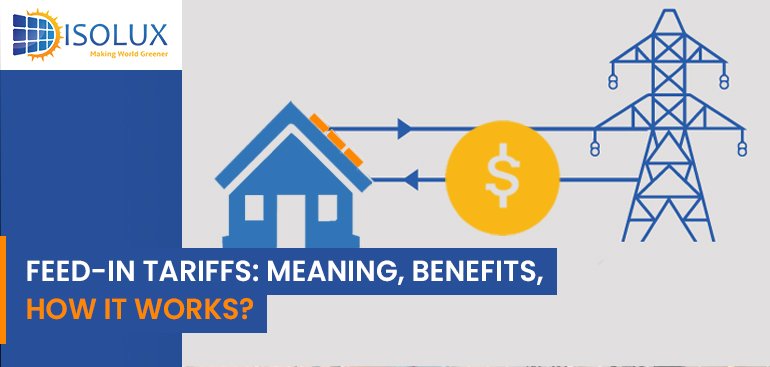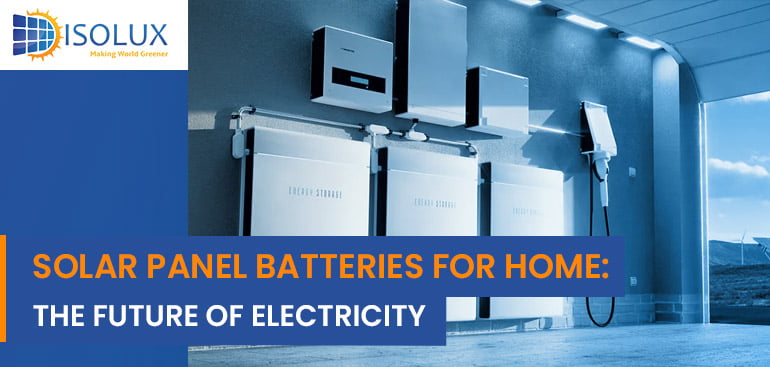If you’re interested in renewable energy, you’ve probably heard the term “feed-in tariff” before. But what exactly are feed-in tariffs, and how do they work? In this comprehensive guide, we’ll take a closer look at feed-in tariffs and provide you with everything you need to know to understand them better.
Feed-in tariffs are a government-backed scheme that rewards people who generate their electricity using renewable energy sources. The scheme pays people for every unit of energy they generate and feed into the grid, regardless of whether they use that energy themselves or sell it back to the grid.
In this blog, we’ll explore everything you need to know about feed-in tariffs, including how they work, the benefits and drawbacks of using them, and how to determine if they are right for you.
What are Feed-in Tariffs?
Feed-in tariffs are a government-backed scheme that incentivizes the generation of renewable energy by paying those who produce it for every unit of electricity generated. The scheme is designed to encourage homeowners, businesses, and communities to invest in renewable energy sources, such as solar panels, by providing them with financial support for the energy they produce.
How Do Feed-in Tariffs Work?
Feed-in tariffs work by paying those who generate renewable energy for every unit of electricity they produce, regardless of whether they use it themselves or sell it back to the grid. The payments are made by the energy supplier, who is required to buy the electricity generated by the renewable energy source at a premium rate, usually higher than the price paid for conventional energy.
The payments are made for both the electricity generated and the electricity exported back to the grid. The amount paid per unit of electricity generated depends on the type of renewable energy source and the size of the installation, but the payments are guaranteed for a set period, usually between 20 and 25 years, making them an attractive investment for homeowners, businesses, and communities.
Benefits of Feed-in Tariffs
Feed-in tariffs offer several benefits to homeowners, businesses, and communities that invest in renewable energy sources, including:
Financial Incentives: Feed-in tariffs provide a guaranteed income for the energy generated by renewable energy sources, making them an attractive investment for homeowners, businesses, and communities.
Environmental Benefits: By investing in renewable energy sources, individuals and communities can reduce their carbon footprint and contribute to a cleaner, more sustainable future.
Energy Security: Investing in renewable energy sources provides individuals and communities with greater energy security, as they are less reliant on traditional energy sources that are subject to price fluctuations and supply interruptions.
Drawbacks of Feed-in Tariffs
While feed-in tariffs offer several benefits, they also have some drawbacks, including:
High Upfront Costs: Installing renewable energy sources, such as solar panels or wind turbines, can be expensive, with costs ranging from several thousand to tens of thousands of dollars.
Limited Availability: Feed-in tariffs are not available in all areas and are subject to government funding, which can be unpredictable.
Reduced Flexibility: Investing in a renewable energy source, such as solar panels, ties homeowners, and businesses to a specific location and can limit their ability to move or expand.
Conclusion:
In conclusion, feed-in tariffs are a government-backed scheme that incentivizes the generation of renewable energy by paying those who produce it for every unit of electricity generated. While they offer several benefits, including financial incentives, environmental benefits, and energy security, they also have some drawbacks, such as high upfront costs, limited availability, and reduced flexibility.
If you’re interested in investing in renewable energy sources and are considering feed-in tariffs, be sure to research the options available in your area and weigh the benefits and drawbacks carefully. With the right investment and planning, feed-in tariffs can be an attractive way to generate income while contributing to a cleaner, more sustainable future.
Get a solar installation quote from Isolux Solar today to start a renewable journey today!
Read Next Blog:
Signs to Upgrade Your Rooftop Solar Panel System
FAQs
Q: Who is Eligible for Feed-in Tariffs?
A: Anyone who generates electricity using a renewable energy source is eligible for feed-in tariffs.
Q: How Do I Apply for Feed-in Tariffs?
A: The application process for feed-in tariffs varies depending on your location. In some areas, you may need to register with your energy supplier, while in others, you may need to apply directly to your government or local authority.
Q: Can I Still Use the Energy I Generate if I Sell it Back to the Grid?
A: Yes, you can still use the energy you generate, any excess energy generated by a solar PV system will be exported to the grid and paid for under the feed-in tariff scheme.




